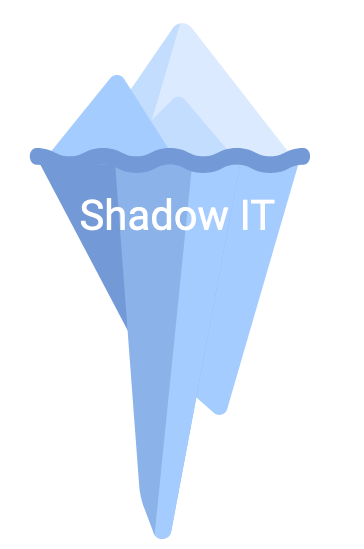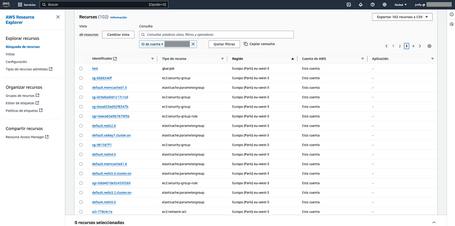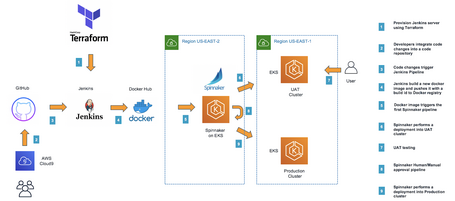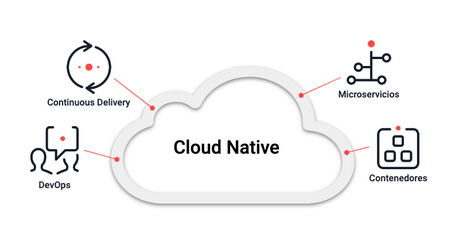In the world of software development, we’ve spent years translating business concepts into software solutions. Over time, we’ve established best practices to solve common problems—but we’ve also accumulated a set of worst practices. That’s exactly what we want to discuss today on the Paradigma blog: antipatterns. Specifically, those that are most common in Cloud environments.
An antipattern can be defined as a recurring solution to a problem that leads to negative consequences, such as inefficiencies, vulnerabilities, or other significant issues.
Sometimes, we learn more from mistakes or bad examples than from things that work flawlessly. That’s why today, we’re diving into the 10 most common Cloud antipatterns (among the many that exist). We’ll explore what each antipattern entails, when it happens, its negative impact, and how to avoid falling into these pitfalls.
1 Shadow IT
Description
A classic issue that isn’t exclusive to the Cloud. In fact, it goes by many names, such as "Stovepipe" or "Hot Cooking". This antipattern involves the creation of independent silos within the same company—often in conflict with one another. Each department attempts to address its own requirements independently, developing custom software solutions that bypass the company’s central IT department.

Problems It Causes
The Cloud makes it incredibly easy to experiment and innovate quickly, putting everything just a click away. However, this also makes it easier for teams to build their own isolated solutions, bypassing the slow and outdated corporate IT department. This leads to hidden costs, lack of standardization, and poor reusability.
Solution
A company-wide technology strategy is essential—one that prioritizes open standards, cross-department communication, and system integration through well-defined interfaces. Encouraging collaboration between teams will help prevent isolated developments while maximizing efficiency and cost-effectiveness.
2 Building a Cathedral
Description
Overengineering, also known as "The Swiss Army Knife". A common architectural mistake is designing systems with unnecessary complexity or functionality. This often happens when trying to anticipate future needs that never actually materialize. A typical example is building an extremely complex microservices architecture for a simple application where a monolithic design would have worked perfectly.
Problems It Causes
By implementing larger and more complex solutions, the obvious consequences include higher costs, longer development cycles, and increased maintenance effort.
Solution
The key is to focus on the current needs of the project and resist the urge to overdesign. As the saying goes, apply the KISS principle: Keep It Simple, Stupid.
3 Over-Provisioning Resources
Description
Another common mistake is provisioning cloud instances or services with excessive capacity "just in case," allocating resources similarly to how it is done in on-premise environments.

Problems It Causes
Over-allocating resources prevents consumption from adapting to actual demand, leading to unnecessary cost increases.
Solution
Adopt right-sizing best practices. Implement auto-scaling mechanisms to dynamically adjust capacity. Utilize cost analysis tools like AWS Cost Explorer or Google Cloud Cost Management to optimize resource allocation based on real demand.
4 Underestimating Hidden Costs
Description
Migrating applications to the cloud without a clear understanding of costs, especially in areas like data transfer, storage, or additional services, can jeopardize cloud adoption or lead to unexpected financial surprises.
Problems It Causes
Unexpected billing spikes may occur, or budgets can be exhausted much sooner than anticipated.
Solution
It is crucial to establish a FinOps strategy from the start, continuously monitor costs in real time, and set up spending limits and alerts.
5 Uncontrolled Expansion
Description
A very common bad practice, especially in development and testing environments, is creating more resources than necessary and forgetting to shut them down or delete them after use.
Problems It Causes
This results in unused resources generating recurring costs, leading to unnecessary expenses.
Solution
As with the previous antipattern, the foundation of the solution should be a FinOps strategy. Implement tagging policies to track resources, configure monitoring tools, and establish regular review processes to identify and remove inactive resources.
6 Lack of Automation
Description
Managing infrastructure through manual tasks instead of automating with tools like Terraform, Ansible, or CloudFormation. Similarly, manually deploying applications instead of using automated pipelines.
Problems It Causes
- Time-consuming repetitive tasks
- Higher risk of human errors
- Inconsistent environments across development, staging, and production
- Limited reusability of configurations and deployments
Solution
Adopting Infrastructure as Code (IaC) from the start ensures consistent, versioned, and scalable infrastructure management. Additionally, implementing CI/CD pipelines for application integration and deployment minimizes errors and accelerates development workflows.

7 Using a Single Availability Zone (AZ)
Description
Designing applications without considering high availability, configuring cloud services in only one availability zone (AZ) within a region.
Problems It Causes
- Risk of service outages due to AZ failures
- Lack of resilience against infrastructure disruptions
Solution
A best practice for building distributed cloud architectures is to use multiple AZs or regions to ensure proper fault tolerance and resilience. Designing with high availability in mind helps maintain service continuity even in the event of an outage.
8 Scaling Only Vertically
Description
Designing applications with only vertical scalability in mind, rather than leveraging horizontal scaling. Increasing the size of machines instead of adding more instances means missing out on some of the key benefits of the cloud.
Problems It Causes
- Physical instance limits may prevent further scaling
- Inefficient cost adaptation to variable demand
- Automatic scaling becomes more challenging
Solution
Design applications **to distribute workloads across multiple stateless instances
9 Lock-In
Description
Also known as Vendor Lock-In, or more informally, “marrying the devil.” This occurs when an organization relies entirely on a single provider for a product or service, making it difficult to switch to alternative providers.
Problems It Causes
- Lack of flexibility to adapt to evolving business needs
- High switching costs, making provider transitions expensive and complex
Solution
Design systems modularly to ensure interoperability and easier migration. Consider multicloud or hybrid strategies to reduce dependency on a single vendor, and adopt open standards and portable technologies like Kubernetes and containers.
10 Failing to Leverage Native Cloud Services
Description
Migrating applications to the cloud without making any changes or adaptations might be quick, but it prevents full utilization of cloud capabilities. This antipattern is closely related to classic patterns like Under-Engineering or The Blob, where poor planning and design lead to fragile and unreliable systems. This also applies to new applications, for example, relying exclusively on virtual machines (VMs) instead of leveraging native cloud services like managed databases or serverless functions.
Problems It Causes
- Higher costs due to inefficient resource usage
- Suboptimal performance and limited scalability
- Increased operational complexity compared to cloud-native approaches

Solution
For migrations, the best approach is to conduct a prior analysis to determine whether the application should be redesigned to take advantage of cloud-native features like auto-scaling and serverless services. Staying up to date with managed services offered by cloud providers and using them whenever possible helps simplify operations and reduce maintenance overhead.
Conclusions
There are many more bad practices, and today we’ve only covered a small selection. However, by staying alert, recognizing, and addressing these common pitfalls, we can significantly improve our cloud usage, optimizing costs, enhancing performance, and increasing reusability and scalability.
In general, most antipatterns stem from a lack of experience, poor planning, or rushing cloud migrations without proper strategy. At Paradigma Digital, we believe that the key lies in tackling these challenges from the start with a proactive and collaborative mindset, leveraging the patterns and best practices outlined in cloud providers' architectural frameworks. This approach can make the difference between a successful project and one plagued with continuous issues.
Comments are moderated and will only be visible if they add to the discussion in a constructive way. If you disagree with a point, please, be polite.






Tell us what you think.